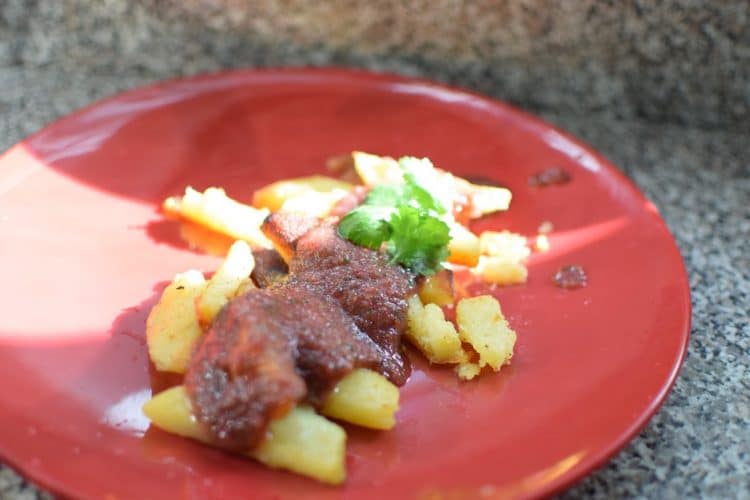Dr. Michael Denner (notes from the American Test Kitchen): Georgians jokingly refer to tkemali (more accurately written t’q’emali) as “Georgian ketchup.” It gets poured on practically everything. I don’t know of another sauce like it: sour, fruity, salty, with a serious herbal punch and a bit of lingering heat. Maybe it looks like Mexican salsa verde, reddish-emerald, but the flavors are dissimilar.
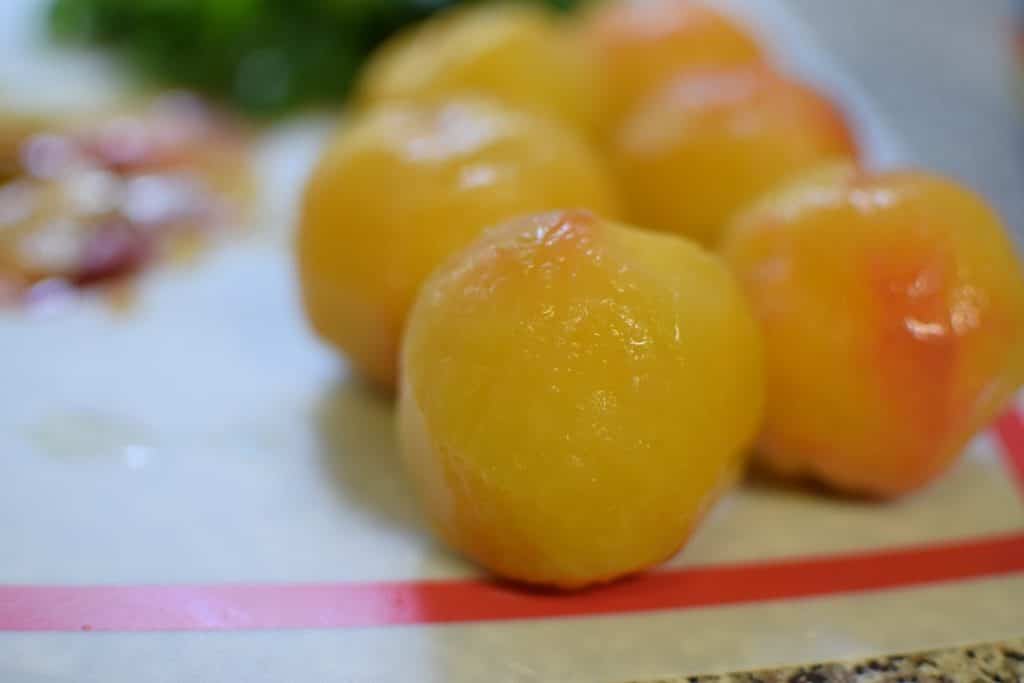
About Tkemali
 The word “tkemali” refers to both the sauce and fruit. In the region, everyone looks forward to spring when green plums appear at the market: Gojeh sabz in Iran, erik in Turkey, tkemali in Georgia. Regardless of what they are called or where they are grown, these green unripe plums are the first sign of spring, considered to be the ne plus ultra of healthy, vitamin-rich foods, and eaten out of hand, or sliced with a knife, always salted, and nibbled between drinks of water or something stronger. I’m convinced that tkemali (the sauce) is just a brilliant, distinctly Georgian riff on this elemental pleasure of sour-salty, vernal green plums: Leave it to the Georgians to add herbs (especially cilantro) and bottle it. I have never seen a Georgian refrigerator or cupboard that did not have many bottles, ready for use.
The word “tkemali” refers to both the sauce and fruit. In the region, everyone looks forward to spring when green plums appear at the market: Gojeh sabz in Iran, erik in Turkey, tkemali in Georgia. Regardless of what they are called or where they are grown, these green unripe plums are the first sign of spring, considered to be the ne plus ultra of healthy, vitamin-rich foods, and eaten out of hand, or sliced with a knife, always salted, and nibbled between drinks of water or something stronger. I’m convinced that tkemali (the sauce) is just a brilliant, distinctly Georgian riff on this elemental pleasure of sour-salty, vernal green plums: Leave it to the Georgians to add herbs (especially cilantro) and bottle it. I have never seen a Georgian refrigerator or cupboard that did not have many bottles, ready for use.
In Georgia, tkemali trees are found on the edges of parks, in abandoned areas, and along highways. Driving through Georgia in mid-March, when tkemali trees are in full, blowsy-white bloom against the grey-brown backdrop of early spring, it seems they’re everywhere.
Tkemali and alycha plums, those used in tkemali sauce, are called cherry plums in America. Because they are the first trees to bloom in the spring, they are chiefly planted as ornamental trees. (The popular cultivar Nigra, the black-leafed plum planted everywhere in the Midwest and South of the U.S.A., is an example of the cherry plum.) In Florida and the South, in deserted corners of wooded lots, you can find the similar, small, angular, endemic Chickasaw plums growing as an understory tree. Although not tkemali, these can be used to make the sauce.
Without wading into a heated discussion about authenticity and the “only real tkemali sauce” (and the “only real tkemali plum”), I’ll point out that the plum tkemali is not some cultivated tree. It grows wild everywhere in western Georgia in the Caucasus and it readily hybridizes with other species of plum. So, even in Georgia, the tkemali plum flavor is diverse and unstable. The word is a culinary idea for the highly unique thing that it is. Every bodega market in Georgia sells “the only real” tkemali sauce, often sold in repurposed one-liter soda bottles. Every bottle is different in color, flavor, and aroma. However, they are all salty, tart, and pungent with cilantro and mint. As Tinatin points out in the recipe below, a good Georgian cook will make a variety of styles of tkemali, depending on the season and purpose.
So, tkemali is not doctrinaire. You have a variety of choices, all of which will render a delicious and appropriate tkemali, with perhaps varying degrees of authenticity. Whenever possible, you should pick the green, unripe cherry plums growing on “ornamental” trees growing in your neighborhood. Or chickasaw plums from along the highway. Absent cherry plums, any green, unripe cultivated plum snatched from the tree in early spring will make a perfectly acceptable, perhaps indiscernibly different, substitute. Failing finding green plums on the tree, any plum from your grocer’s cooler will likely do the trick. Frankly, it’s rare to find anything but unripe plums for sale in groceries in the United States. Any sourish, unripe plum from the produce aisle will do the trick, especially the hard kelly-green gage plums. Tkemali comes in a variety of sournesses, so add a little lemon juice or citric acid (available from any grocer, sold with the canning supplies) at the end if you like. When making this sauce for students, I used unsweetened cranberry juice concentrate that I purchased at the local health food store. The fruit and acidity should be balanced, like fresh pomegranate juice, with the sour conquering the fruity, slightly-sweet notes.
There’s additionally a sweet tkemali, described below, good for putting up for winter. Finally, I’ll add that personally I prefer tkemali with texture, and when I make it, I grate or blend the fruit very coarsely, sort of a fresh salsa consistency. The tkemali they serve in fancy restaurants has a finer texture, almost like syrup.
The recipe below is my translation and adaption of the recipe in Лобио, сациви, хачапури, или Грузия со вкусом (Lobio, Satsivi, Khatchapuri, or Georgia with Taste) by Tinatin Mzhavanadze.
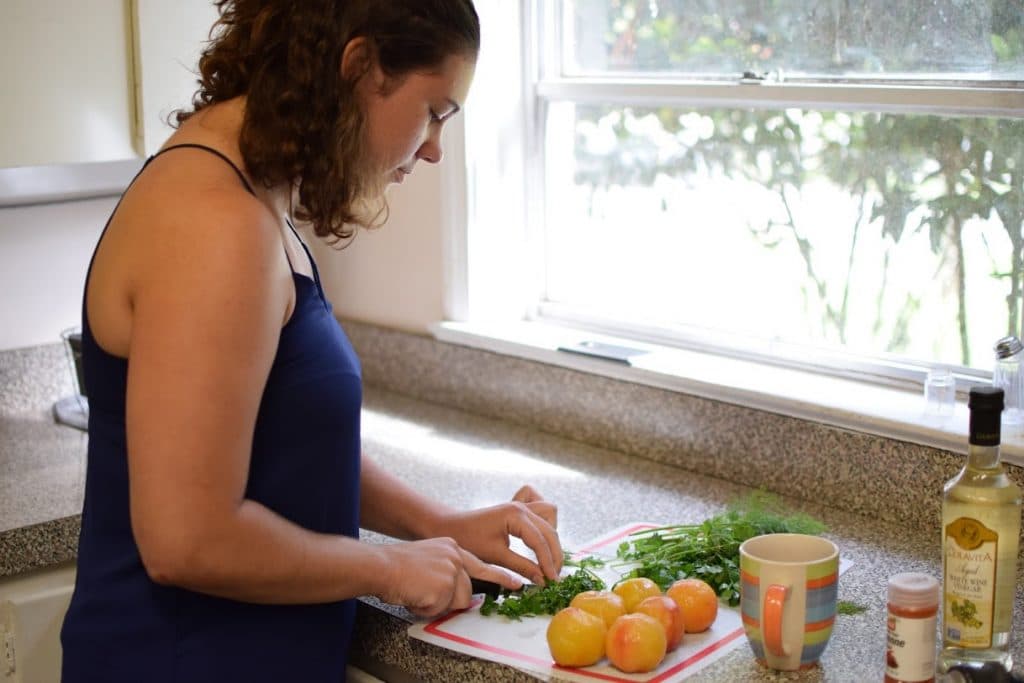
Tkemali Recipe
| Tinatin Mzhavanadze (as translated and adapted from the Russian by Dr. Michael Denner): | Tinatin Mzhavanadze (original text): |
| When spring has definitively and irrefutably arrived in Georgia, it’s suffused with the fragrances of eggplants, tomatoes, green beans, basil, garden strawberries, cherries, and blossoming cilantro. (Cilantro in bloom doesn’t smell like regular cilantro, and it’s used differently.)… And every sort of herb and vegetable.
But most important, fundamental, elemental, and irreplaceable thing – is the arrival of the long-awaited scent of the green tkemali plums. This scent immediately reminds the organism, pale from winter-induced vitamin deprivation just who is the master of the house – and just who can turn any simple, unpretentious fried egg or potato into ambrosia fit for gods… The true herald of spring is the welcome appearance of tkemali. These are green plums, from which we Georgians make a sauce, also called tkemali. With this potion, even ordinary scrambled eggs or boiled potatoes become food for the gods! My refrigerator is loaded with all sorts of sauces that wait, mournfully, for their monthly appointed hour. But tkemali flies off the shelf… One bottle a week! Two bottles a day during high season! Making the sauce is quite simple… But a few words about the ingredients. In Georgia, we mainly use unripe green tkemali or alycha plums. They’re different varietals of plum, dissimilar in size and flavor: tkemali, when it ripens, becomes yellow or red, while alycha plums remain green, with perhaps a little yellow, even when ripe. Pennyroyal (Mentha pulegium) grows wild in wetlands and bogs. It’s called ombola in Georgian, and it has a decidedly strong, wild, musky scent… some people love it. You can replace it with garden mint, peppermint, or perhaps best of all, spearmint. You can use tkemali on: Potatoes, meat, fish, chicken, macaroni, pork, omelets, steamed vegetables. It’s probably not a good idea to use it in tea or on a cake. |
Если весна в Грузии наступила окончательно и бесповоротно – везде стоит запах баклажанов, помидоров, зелёной фасоли, базилика, клубники, черешни, цветущей кинзы (да-да, она по-другому пахнет и по-другому употребляется) и всякого другого разнотравья и овощей.
Но самое главное, основное, базовое и незаменимое – это появление долгожданных зелёных ткемали, которые сразу напоминают истощённому зимним авитаминозом организму, кто в доме хозяин, и с которыми любая незатейливая яичница или картошка становятся пищей богов. В моём холодильнике полно всяких соусов, которые скорбно ожидают своего часа месяцами, но только соус ткемали улетает по бутылке в неделю, а в сезон – по две бутылки за день. Делается соус вроде бы элементарно: купите два килограмма зелёных ткемали или алычи (это разные сорта слив – и по размеру, и по вкусу, отличие в том, что ткемали впоследствии становятся желтыми или красными, а алыча, даже спелая, остаётся зелёной или чуточку желтеет), по пучку зелени – цветущей кинзы, укропа, пёрышек молодого чеснока, но вот первое затруднение: есть еще такая травка душистая, «омбало» называется, по-русски «блоховник», или мята болотная (Mentha pulegium). |
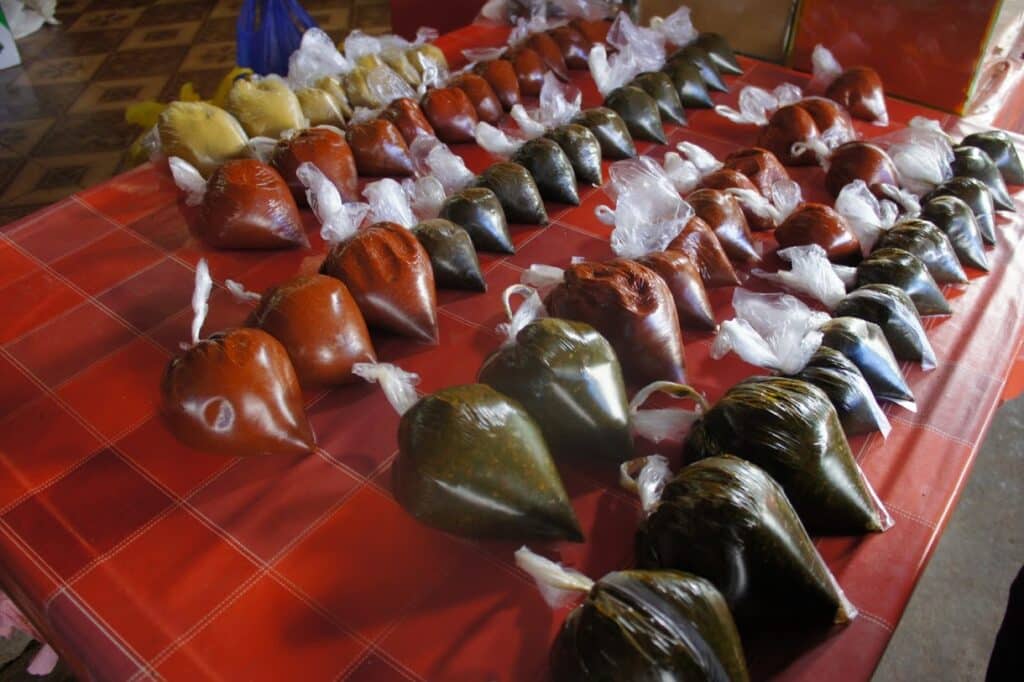
Ingredients (English)
- 2 pounds green, unripe plums, see recipe introduction
- Large bunch blooming cilantro (3 1/2 ounces)
- Large bunch dill (3 1/2 ounces)
- Large bunch garlic greens or chives (3 1/2 ounces)
- Large bunch pennyroyal or spearmint (3 1/2 ounces), see recipe introduction
- Sea salt
- Freshly-ground pepper
- Hot paprika or other hot, dried and ground pepper, or Adzhika
- Makes about a quart of tkemali.
Preparation (English)
 In a large pot, cover the plums with about 3 inches of water. You will need around 5 quarts of water. Place a kitchen colander in the sink. Bring to a rolling boil over high heat for 5 minutes. Remove the pot from the heat and pour off the water and plums into the colander. Rinse the plums with cool tap water. (This step removes some of the acidity of the plums.)
In a large pot, cover the plums with about 3 inches of water. You will need around 5 quarts of water. Place a kitchen colander in the sink. Bring to a rolling boil over high heat for 5 minutes. Remove the pot from the heat and pour off the water and plums into the colander. Rinse the plums with cool tap water. (This step removes some of the acidity of the plums.)
Meanwhile, finely mince the cilantro, dill, chives, and mint. You can also chop it all finely with your meat grinder, food processor, or blender. Just make sure the herbs are evenly chopped. Set aside.
When the fruit is cool enough to handle, into a large prep bowl, grate the plums against the largest holes on your box grinder, discarding the skin (it should fall off as you grate the fruit) and the pits.
Mix the herbs into the plum pulp and stir. Season with salt and a little Adzhika or dried red pepper. Taste the tkemali:If you like it spicy, add more pepper. If the sauce is very thick, thin it with some boiling water. If it is very sour, add a little sugar. Try not to drink more than a few cups. You’ve made this sauce to share!
Pour into clean bottles. (In Georgia they often use empty 1/2 liter plastic cola bottles.) Put them in the refrigerator where they’ll stay good for several weeks.
-
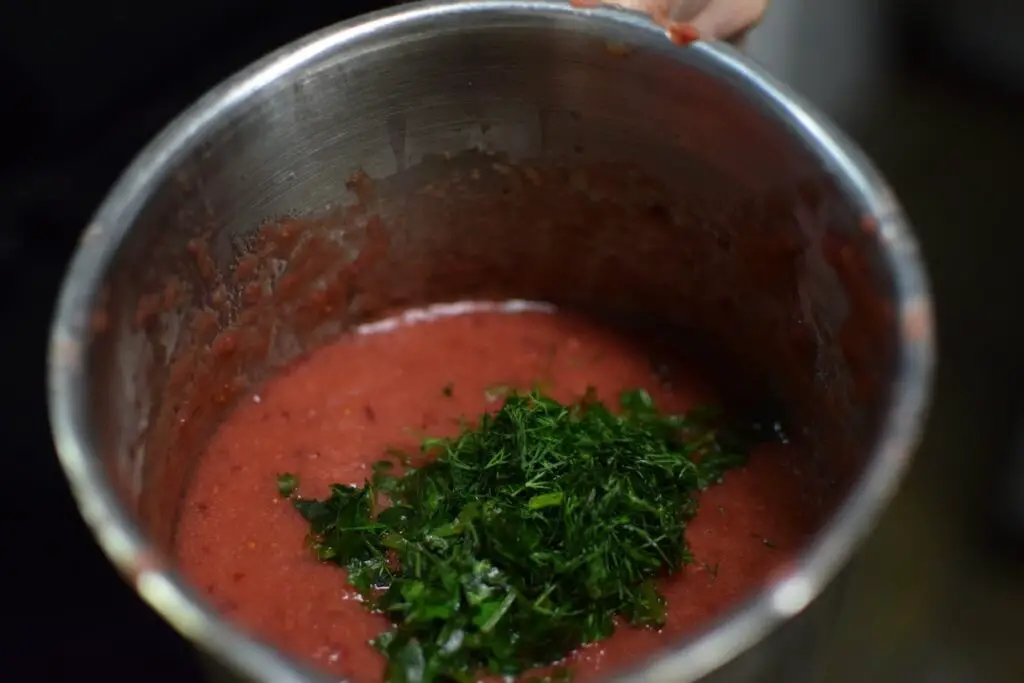
Tkemali with herbs freshly added. Let your imagination run a little! The adventurous among us add all sorts of fruit pulp to their tkemali: the fruit of dogwoods, blackberries, raspberry, currants. But that’s all freethinking, nothing to do with the classic versions.
Winter version for preserving: The above is the spring version, the one made for more or less immediate consumption. But there’s a version of winter, too, that stores well: For summer, use ripe tkemali plums and add the deep purple, ripe Italian prune plums (Damson plums, Prunus insititia).
You could stick to just tkemali plums, but if you knew how ripe prune plums complete the tasty picture! Sometimes I make my winter tkemali using only prune plums (the black ones often called Italian), and it turns out a sweet version of the sauce.
But you never go wrong with a 1:1 ratio of tkemali and prune plums. Follow the directions above with the following minor variations:
1) Don’t pour off the water in step 1, since the plums aren’t as sour. Use the water from the first boiling to loosen up the plum pulp in step 4.
2) Push the tkemali through a kitchen sieve or use the blender to reduce the sauce to a very fine, regular consistency after step 3.
3) Boil the tkemali for about 5 minutes after step 4.
When the sauce is cooled, pour it into small, glass bottles that have been sterilized with boiling water. Pour a little vegetable oil into the bottles to form a protective layer, and place in a cold, dark area, like a basement, root cellar, or the back of the refrigerator.
Every good cook has a variety of these sauces stashed in the cellar: Red, yellow, green, and brown, varying in their sourness and heat.
SRAS: The above translation and adaptation differs from the original not only in converting the measurements from metric to imperial units (as used by Americans), but also in codifying and more distinctly spelling out the processes that the original author more breezily lays out for an audience more familiar with the food. While giving less instruction, she does give more discussion of variations on the food, for instance. The adaptation by Dr. Denner relies on both the original text and experience traveling to meet the original author and make the recipes with her – making this particular translation and adaptation effort extraordinarily collaborative. We include the original text below for comparison.
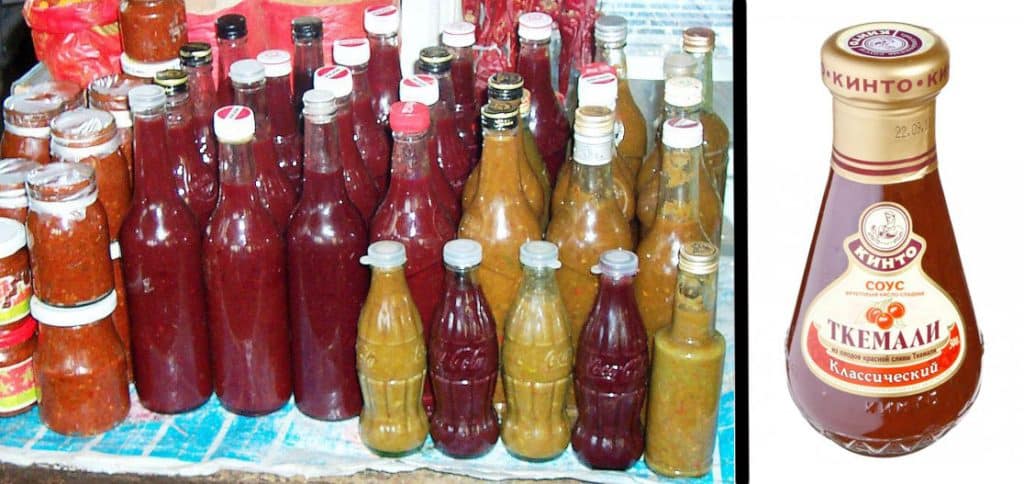
Right: a brand of commercially-produced tkemali widely available and popular in Eurasia.
Ingredients (Russian)
(Ингредиенты)
- (на 800 мл соуса):
- алыча (ткемали, терн) – 1 кг
- цветущая кинза, укроп, зелень чеснока, мята болотная (омбало) – по пучку
- соль, перец красный стручковый – по вкусу
- аджика
Preparation (Russian)
(Приготовление)
В большой кастрюле залейте сливы холодной водой, чтобы сверху было воды на четыре пальца, прокипятите минут пять и слейте воду, чтобы ушла лишняя кислинка. Протрите мягкие ягоды через эмалированный дуршлаг с крупными дырочками, избавляясь от косточек и кожицы, а однородная зелёная масса пойдет в дело.
Всю зелень мелко режете на доске, или прокручиваете через мясорубку, или крошите в блендере, главное – однородно измельчить; вмешиваете ее в ткемалевую кашицу. Можно ещё раз протереть через дуршлаг – но вы хорошо подумали? Под конец добавляете соль и аджику. Если нет приличной аджики – просто красный молотый перец.
Капните на ладонь и пробуйте: если любите острее и солонее – добавляйте специй, если любите чуть пожиже – разбавьте кипячёной водой.
И учтите, что все равно может быть слишком кисло, тогда добавьте сахарный сироп.
Хорошенько размешайте, разлейте через воронку по бутылкам и ставьте в холодильник. Если, конечно, не выпьете половину ткемали прямо из чашки – как я.
Это именно летний вариант для быстрого употребления, а не для хранения на зиму – для зимы лучше взять спелые ткемали густого красного цвета, добавить спелый тернослив (Prunus insititia).
Вот вам и вторая загвоздка: конечно, можно ограничиться одними лишь ягодами ткемали, но если бы вы знали, как расцвечивает вкусовую картину тернослив! Иногда вообще берут только его – получается сладкий вариант ткемали.
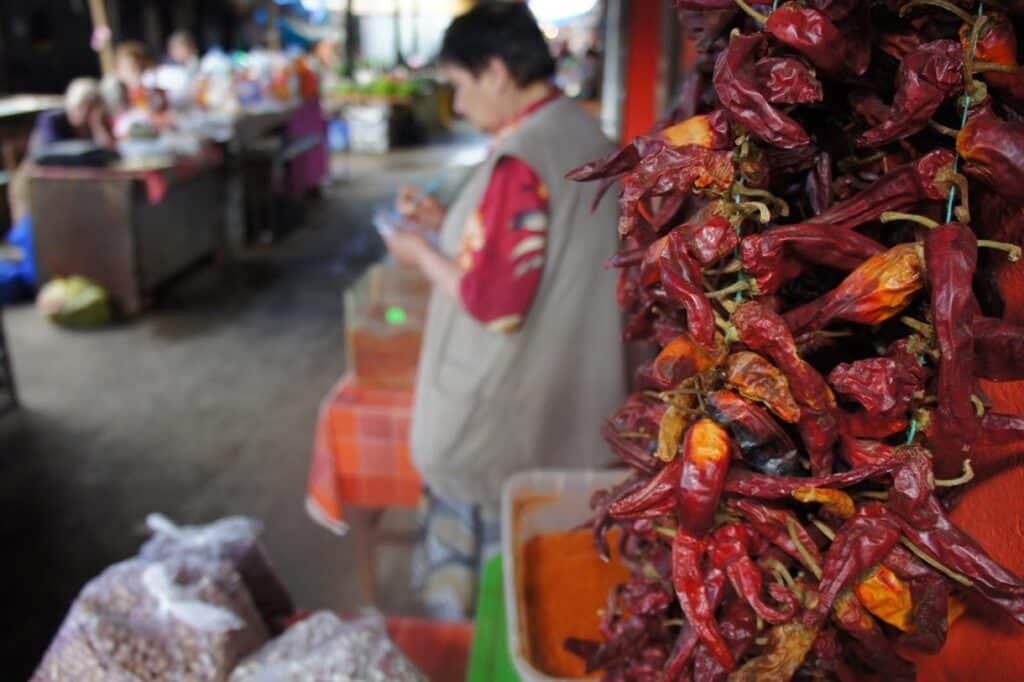
Мне больше по душе пропорция 1:1.
Так вот, берем ягоды и делаем все точно так же, но:
1) воду после отваривания ткемали не выливать, а разбавлять густоту ею же – это раз;
2) уж точно еще раз протереть через дуршлаг (есть такой специальный эмалированный дуршлаг с крупными дырочками именно для подобных процедур) для однородности – это два;
3) и все вместе прокипятить минут десять – это три.
Экспериментаторы добавляют в ткемали кизил, ежевику, малину, смородину – но все это чистая самодеятельность и к классике отношения не имеет.
Залить готовый кипящий соус в стерилизованные бутылочки, сверху можно добавить тонкий защитный слой из растительного масла, закрутить крышки и поставить в прохладное темное место.
У хороших хозяек множество вариантов ткемали в кладовках: всевозможные оттенки красного, жёлтого, зелёного и коричневого, различаются они и по степени остроты и кислоты.
Можно поливать: картошку, мясо, рыбу, курицу, сосиски, макароны, омлеты, разве что в чай или в пирожные добавлять, наверное, не стоит.
В этом соусе масса витаминов, зимой он возвращает вкус лета, притом это совершенно натуральный продукт без консервантов, а уж вся еда, особенно жареная, становится с ним невыносимо вкусной, и если учесть, что ткемали нейтрализует жиры и не дает вам сильно поправиться – то я не понимаю, чего вы ждёте?!
Our Favorite Tkemali Videos
A clear video instruction in Russian.
You Might Also Like
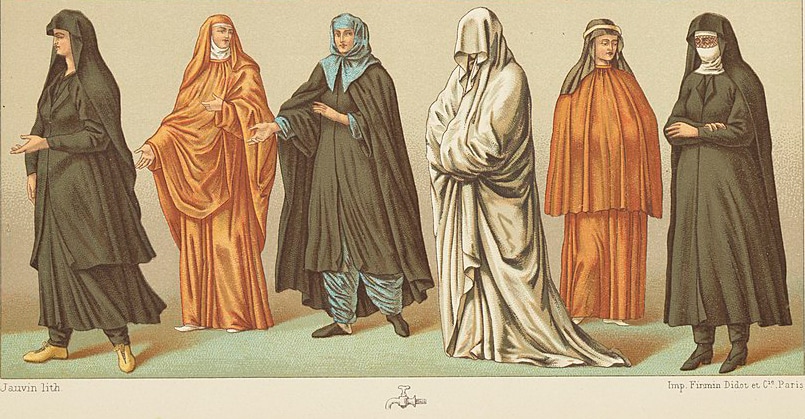
The Habits of Nuns in Catholic and Orthodox Traditions
Despite their cloistered livelihood, nuns have found their way into many veins of popular theater and movies. However, their usual depiction, wearing black habits with a veil and carrying a rosary, is not accurate for all nuns. It is true that the symbolic meaning of the habit is consistent across both Catholic and Eastern Orthodox […]
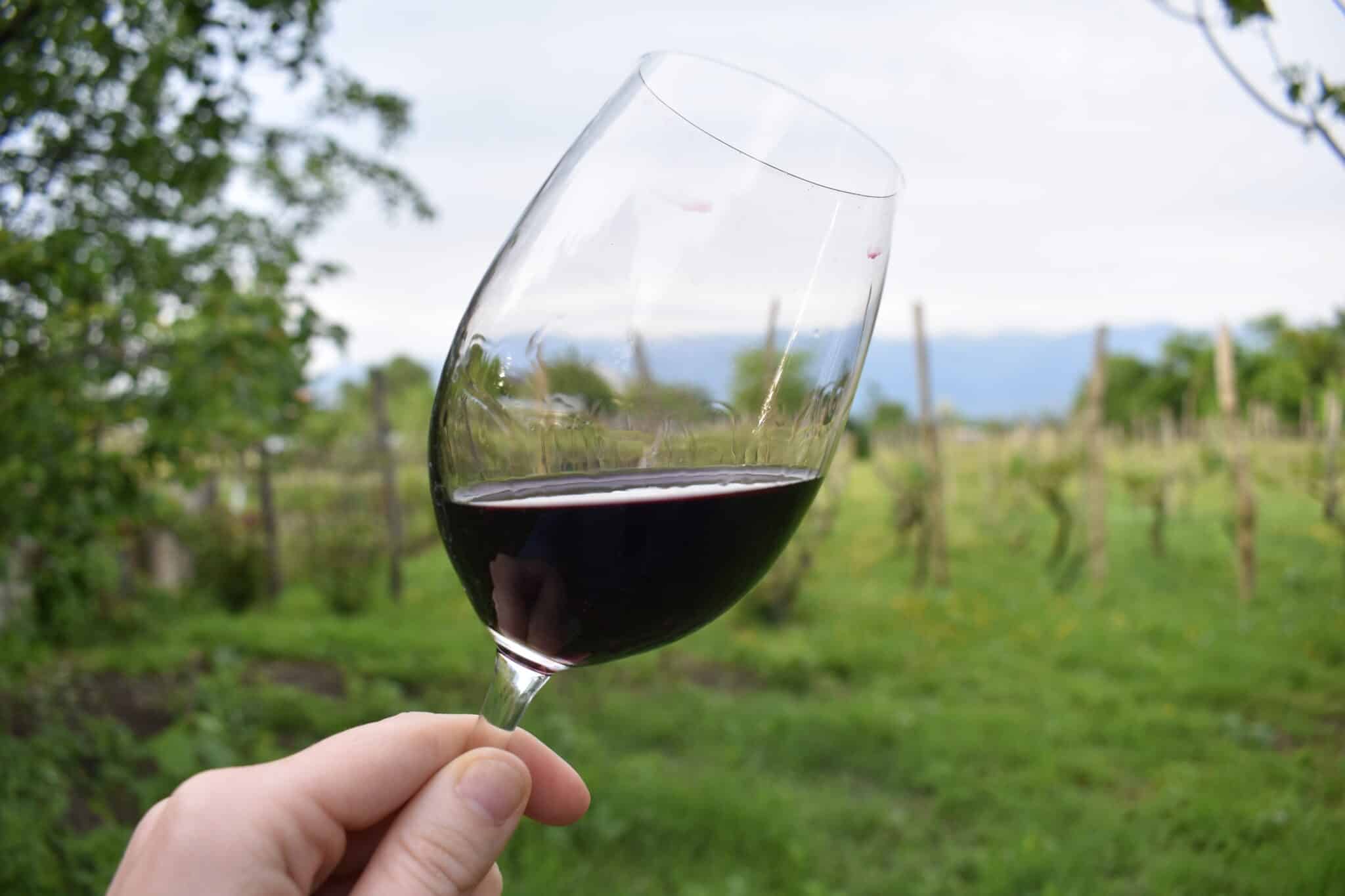
8,000 Years of Winemaking Lives on in Georgia
Georgia is home to one of the world’s most diverse selections of native grape varieties. Evidence suggests it’s the oldest winemaking region in the world and it retains unique and ancient winemaking technologies to this day. Over millennia, winemaking has become deeply integrated into Georgian cuisine, tradition, and identity. It is present at elaborate feasts […]
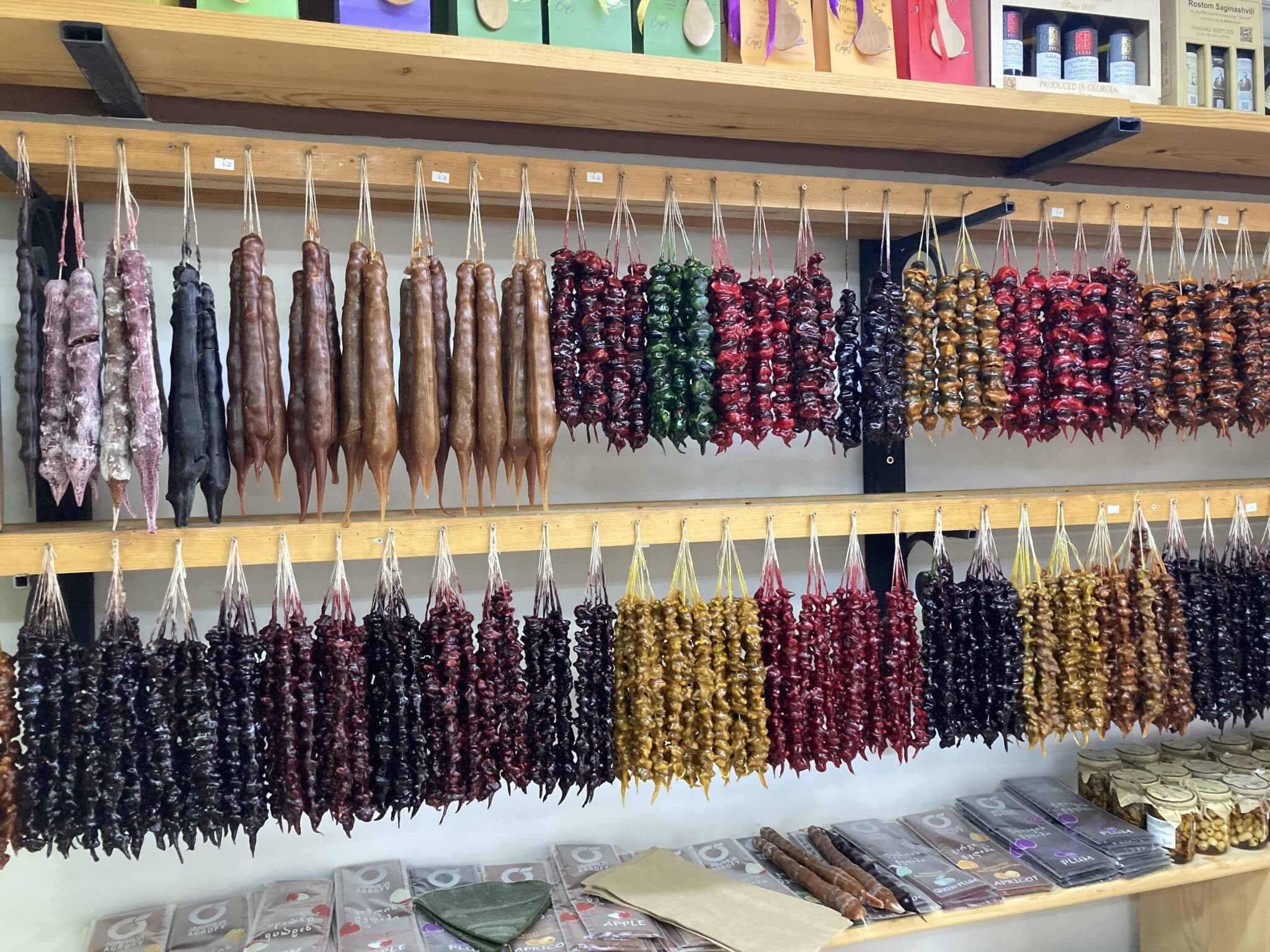
Churchkhela, Sharan, and Pelamushi: Desserts Off The Vine
Strolling through a marketplace in Georgia, you might be surprised to see the array of multicolored sausage-shaped candies hanging from the stalls. These are churchkhela, a traditional snack made by dipping strings of nuts into thickened fruit juice to create a chewy exterior. In Armenia, you’ll see “sausages” known locally as sharan that are very […]

Berikaoba: Georgia’s Spring Festival Rises Again
Berikaoba is defined by its monstrous-looking masks, good-natured pranking, games and performances of strength, freely shared food and wine, and general festive atmosphere. Although the festival was nearly lost to the passage of time, locals, foreigners, and Georgians from other corners of the country now flock to the Kakhetian villages of Didi Chailuri and Patara […]

Georgian Holidays 2024: A Complete Guide
Georgian holidays strongly reflect the country’s unique traditions and its demographics. First, as more than 80% of Georgians identify with the Georgian Orthodox Church, the strong influence of the church can be felt in the preponderance of Orthodox holidays. Georgia also has several holidays celebrating its statehood and independence, which have been hard-won. We can […]

